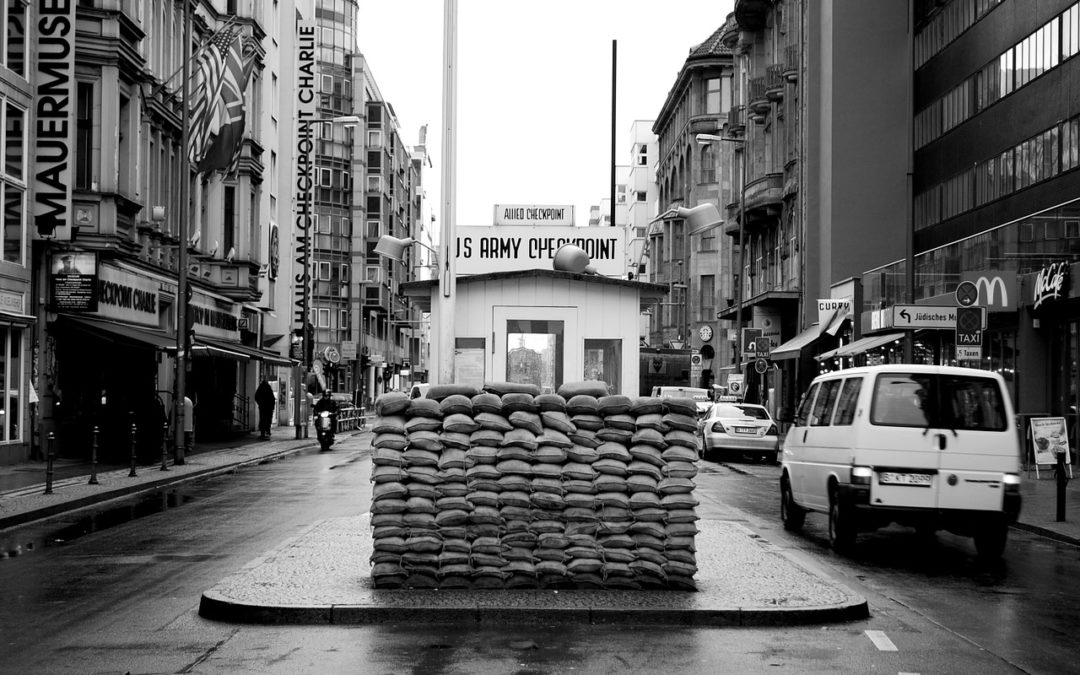By Isaac Woolley, University of Leicester
The Bibliography of British and Irish History (BBIH) is a record of over 620,000 books, articles and essays relating to the British and Irish past, worldwide. The Bibliography is updated three times a year, with the latest update (October 2020) adding over 4,500 records of new publications — the majority of which cover titles published in 2019-20.
Here, Isaac Woolley, an IHR summer intern from the University of Leicester, uses data from BBIH to examine the publishing patterns of four conflicts: the 1899-1902 Boer War, the Spanish Civil War, the Cold War and the Falklands War. For this project, Isaac used BBIH data up to and including that in the June 2020 update.
The Bibliography of British and Irish History was updated in June 2020, which saw the addition of over 4,000 new records. Considering this, it seems a good time to conduct some simple broad-sweep data collection. Observing the number of publications on a subject over time is a useful exercise for historians to pick out and investigate any obvious historiographical trends.
I was able to find the number of publications on a subject per year in the BBIH by using the Advanced Search to limit the results to publications to one year at a time. I ran this search each time for publications relating to the Boer War, Spanish Civil War, Cold War and Falklands War. All four terms appear in the Bibliography’s taxonomy of index search terms, so identifying titles relating to the subject but not necessarily with the search term in the title. A search for ‘Cold War’, for example, brings up Jeremy Black’s The Politics of James Bond: from Fleming’s Novels to the Big Screen (2000) and Ben Macintyre’s A Spy Amongst Friends: Kim Philby and the Great Betrayal (2014).
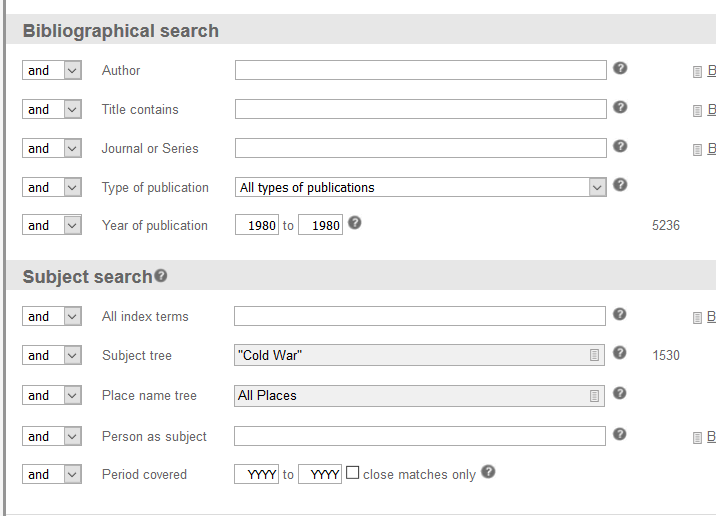
Historical publications for the Boer War are available from the very start of the twentieth century, immediately after the war itself, before dipping until the 1960s and 70s. Many of these early publications were published across multiple years, such as The History of the Boer War by F. H. E. Cunliffe, which appears from 1901-1904. The early titles also contained much primary material such as Frederick D. Baillie’s Mafeking, a Diary of the Siege and Arthur Hamilton Bayne’s My diocese during the war: extracts from the diary.

There is a massive spike in Boer War publications in 1999, most certainly as a result of it being the centenary of the conflict, prompting the publications of miscellanies (collections), such as ‘Recording the South African War : journalism and official history 1899-1914′, which contains five articles, or ‘The Boer War: army, nation and empire’, which contains seventeen essays. The journal Suid-Afrikaanse historiese joernaal, has three articles in 1998, and 22 in volume 41 in 1999.
Historian Andrew Porter claimed that this commemoration both represented and fed new perspectives on the war, and publications have remained relatively high in the first decade of the 2000s.
For Boer War titles there is another smaller spike in 2011. This year has a number of publications on the Boer War and discussions of the concentration camps, which isn’t a subject addressed in titles from the previous year. One example is ‘The Invention of the Concentration Camp : Cuba, Southern Africa and the Philipines, 1897-1907′. This might evidence an increase in interest in the subject of incarceration in the Boer War.
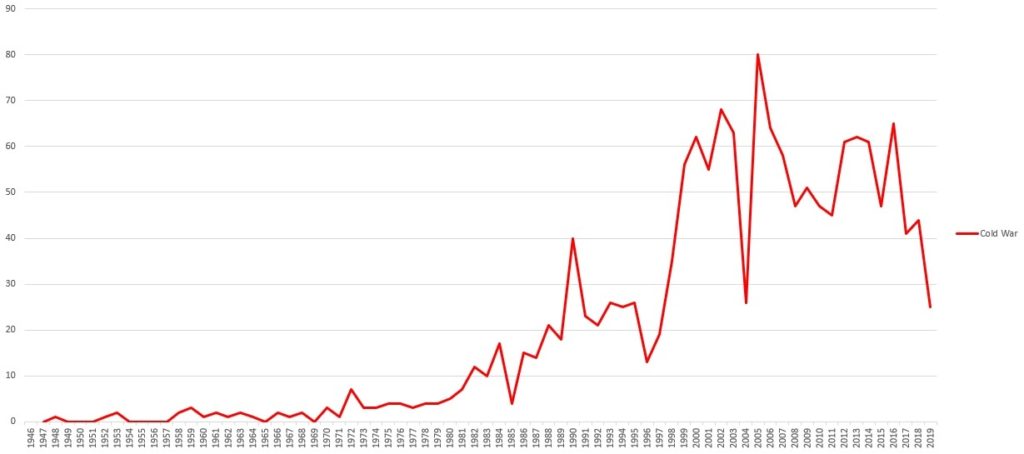
There is little historical writing on the subject fo the Cold War until the 1980s and 1990s. While not an anniversary, 1990 seemed to be a point where historians were ‘summing up’ on the Cold War so far, most obviously following the recent fall of the Berlin Wall. For example, content listed for this year (1990) includes the book Soviet-British Relations Since the 1970s, which sought to examine the previous decades in the context of the Cold War’s presumed continuation into the 1990s. Even after the Cold War’s end in 1991, publications do not surpass those of 1990 for a further nine years.
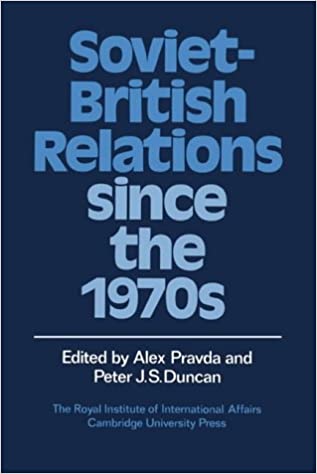
Publications on the Spanish Civil War remain very few in number until the 1990s, with many years having no results at all. The Bibliography’s rich metadata also enables the researcher to see how a chosen subject is approached, not just that it’s being written about. The largest subject tree relating to the Spanish Civil War, for example, is ‘political administrative and legal history’, with 199 results (indicating an interest in the wider political context for this conflict), while 62 results fall into ‘military history’. Both categories experience a rise in publications from the 2000s onwards, though some of the earliest publications seem to deal more with military history.
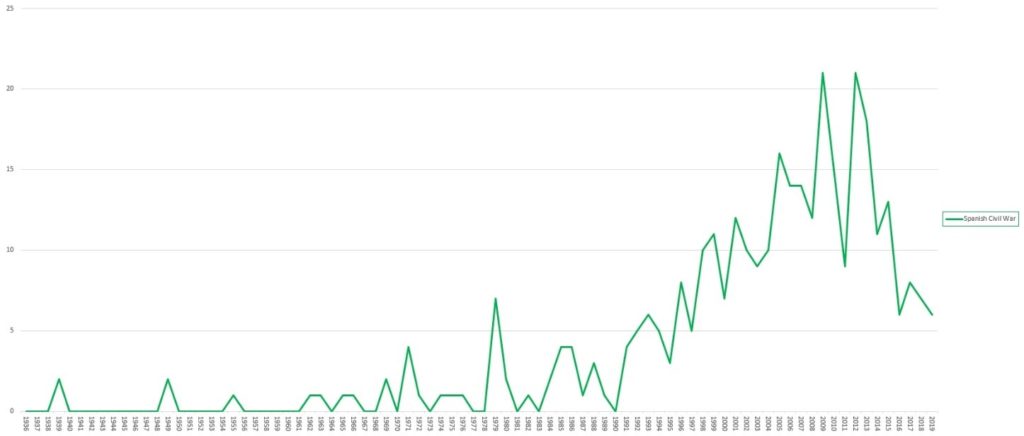
There has been an increase in publications about the impact on Wales of the Spanish Civil War, one recent example being ‘You are a legend’ : the Welsh volunteers in the Spanish Civil War, by Graham Davis, published in 2018. Of the 15 results for searching for the Spanish Civil War and the country Wales in the place name tree, 14 are from after 2000, indicating more interest relatively recently. All of them are either about Welsh volunteers in the war or refugees who arrived in Wales.
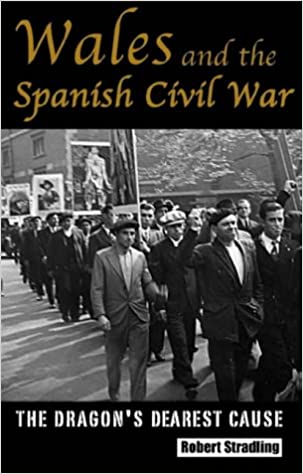
Neither the publishing record for the Spanish Civil War nor the Falklands War have such extreme spikes of activity as for other conflicts in this study. Both wars also have fewer publications in the BBIH in general, which might be expected given the Spanish Civil War did not affect Britain as much as the other conflicts listed, though I would have expected more results for the Falklands War.

Many other questions remain when looking at these graphs; why did the publications for the Cold War and the Falklands War dip in 2004, then spike in 2005? Why did it take so long after the fall of the Soviet Union in 1991 to see a rise in publications? These results might just be random without any discernible cause, though continued examination of these results or similar data collection for other subjects might reveal some patterns–for example, the release of official documents or the publication of memoirs which generate new research.
And publishing in these areas also continues. The October 2020 update of the BBIH added another 40 early recent titles relating to these four conflicts. Publications from 2020 include: David Boucher’s ‘British Idealism, Imperialism And The Boer War’ from the journal History of Political Thought (2020) and Ekavi Athanassopoulou’s ‘A tepid alliance: Britain and Turkey in the post-war and early cold war years’ in Middle Eastern Studies (2020). Further titles, I’m sure, will feature in the Bibliography’s next update in January 2021.

****
The IHR’s internship programme
Each year the IHR runs an internship scheme with the University of Leicester for second-year History undergraduates. In previous years Leicester students have spent a month at the Institute, learning about the IHR’s research projects and spending time with our Digital research team.
This year we were unable to host interns in person and so created 8 virtual internships of one month each during which students worked on a range of digital, publishing and Library projects with IHR staff. The virtual programme worked really well and we hope to continue this programme in 2021. As ever, we’re very grateful to the University of Leicester for the partnership and to all those, including Isaac, who took part in exceptional circumstances in 2020.

